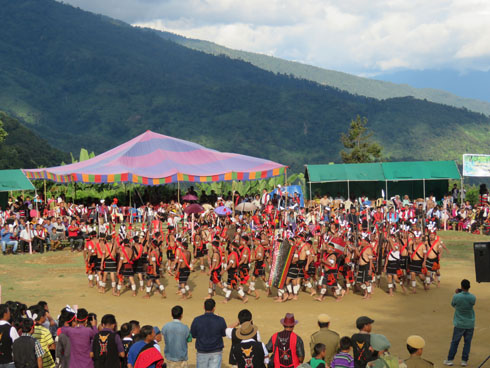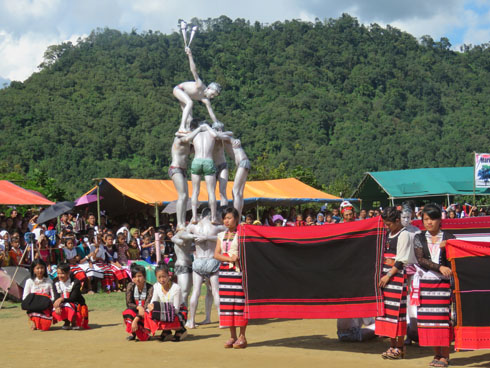

Liangmai (ISO 639-3) belongs to the Tibeto-Burman language family under the Zeme-Naga group (Burling 2003). Earlier It was classified under the Kuki Naga subgroup of the Tibeto-Burman family by Grierson (1903). It is spoken mainly in Manipur (the Tamenglong headquarters; the Tamei and Tousem sub divisions; the Senapati district; and Kanglatongbi of Imphal West) and Nagaland (the Tening Sub-division; Jalukie, Peren, Dimapur and Kohima dis-tricts). According to the SIL Ethnologue (2001), the total population of the community is 34,200 speakers (approx). Liangmai and Zeme are referred to collectively as Zeliang in Nagaland; in Manipur, they are, however, recognised separately as Zeme and Liangmai. The dominant languages spoken in the Peren district are Nagamese, Zeme and English.
There are about 15 Liangmai villages in the Peren district of Nagaland. The staff of CFEL has conducted three field trips in the Peren district: the first and second field trips were conducted in the Ntu village and the third field trip in the Tening and the Ntu village. Ntu has a total population of 1153 people of which 608 are males and 545 are females according to the Census 2011. The Tening town, which is close to Ntu, is approximately 21 km away from the sub-district headquarters Tening and 69 km away from the district headquarters Peren. The majority of the Ntu people do shifting cultivation and grow oranges, chillies, bananas, turmeric and the like. The area of study is presently confined only to the Ntu village, which is 69 kms away from the Peren District of Nagaland. According to the 2011 Census, Ntu has 209 households and the literacy rate is 76.35 % against the 79.55 % of Nagaland. In Manipur, all Liangmais follow Christianity as their religion. However, in Nagaland, a small section of the people at the Tening village still follow their traditional religion, i.e. a Heraka cult that was founded by Mr. Jadonang and Rani Gaidinliu.
According to UNESCO, the endangerment status of the language is vulnerable. Originally, the Liangmais were known as Kyliangmaikhatmai (kyliang 'sector'; khat 'one'; mai 'people'). In the present day, the name Liangmai means 'one group'.
Data collected from the 3 field trips:
2300 lexical items; 570 sentences; 4 folk songs; 5 stories about the origins of the Liangmai community. The sound segmentation and the phoneme inventory are completed.

Performing Magubo (Ho-hoing) by Liangmai men

Performing martial art during the Chagaa festival